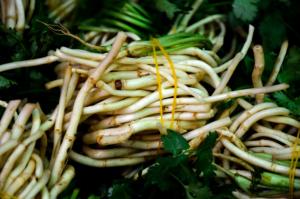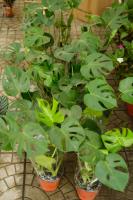What Species is the Tree in Life Episode 9 Plants?
Life is a nature documentary series produced by the BBC that explores the diversity of life on Earth. In episode 9, Plants, the series dives deep into the world of plants, showcasing their unique adaptations and survival strategies. One particular plant that catches the attention of many viewers is a tree with striking aerial roots. In this article, we will explore the identity of this species and some of its fascinating characteristics.
The Tree's Appearance
The tree in question is commonly called the strangler fig (Ficus aurea). It is a tropical species found throughout Central and South America, as well as parts of the Caribbean. The strangler fig is easily recognized by its aerial roots that hang down from the branches and can grow to incredible lengths, sometimes reaching the ground and then spreading out to encircle the trunk. As the roots thicken, they eventually form a lattice around the host tree, choking off its access to sunlight and nutrients, and ultimately killing it.
The Strangler Fig's Life Cycle
The strangler fig begins life as an epiphyte, meaning it grows upon another plant for support. When a strangler fig seed lands on a branch or in a crevice in the bark of a host tree, it sends down a taproot that eventually reaches the ground. As the plant grows, it sends out more roots that wrap around the host tree and eventually fuse together, forming a strong, woody casing that encases the host tree. Inside this casing, the strangler fig continues to grow and expand, eventually reaching a height of around 30 meters.
The Strangler Fig's Ecosystem Role
Despite its destructive nature towards other trees, the strangler fig is also an important player in its ecosystem. Its aerial roots and vast surface area provide a habitat for a variety of species, including insects, birds, and mammals. The figs produced by the tree are also a significant food source for wildlife. Additionally, the strangler fig helps to prevent soil erosion and has a role in the carbon cycle, sequestering carbon dioxide from the atmosphere.
Conclusion
While the strangler fig may appear ominous with its tree-strangling ways, it is an intriguing species that plays a crucial role in its ecosystem. Its unique adaptations and life cycle make it a fascinating subject for study and a reminder of the diversity of life on our planet. If you enjoyed learning about this species in the Plants episode of Life, there are many other incredible plant species with equally fascinating stories waiting to be discovered.

 how many times do yo...
how many times do yo... how many planted tre...
how many planted tre... how many pine trees ...
how many pine trees ... how many pecan trees...
how many pecan trees... how many plants comp...
how many plants comp... how many plants can ...
how many plants can ... how many plants and ...
how many plants and ... how many pepper plan...
how many pepper plan...































